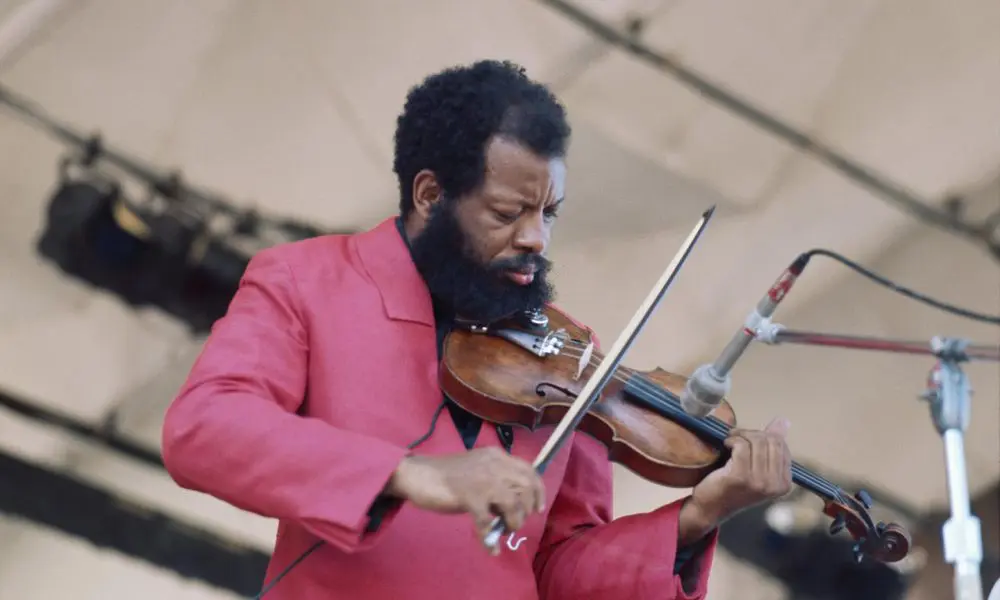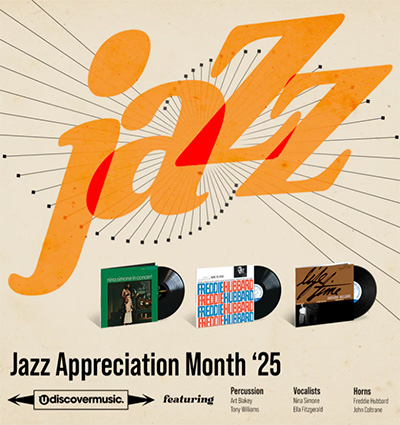Free Jazz: A Short History Of The Jazz Sub-Genre
Free jazz was a much misunderstood – and even maligned – genre when it emerged in the late 50s, but it resulted in some of the finest modern jazz.

Back in 1959, Texan alto saxophonist Ornette Coleman went to New York’s Five Spot venue armed with just a plastic saxophone and proceeded to wreak havoc with a radical new sound that rejected orthodox notions of melody, harmony, and structure – the supposed bedrocks of conventional western music. He called it free jazz, and even the normally insouciant Miles Davis was perturbed by it. As he wrote, in his customary pithy way, in his book, Miles: The Autobiography: “He just came and f__ked up everybody.” Some saw Coleman as a visionary – classical conductor Leonard Bernstein proclaimed him a genius – while others, among them trumpeter Roy Eldridge, were less enthusiastic and thought the saxophonist was a charlatan. “I think he’s jiving, baby,” Eldridge said.
Back then, admitting that you were partial to free jazz came with a high price– depending on who was “outing” you, you could face ridicule, hostility, and even the prospect of being ostracised. The old-school trad jazzers, the so-called “moldy figs,” for whom even “bebop” was a dirty word, felt free jazz was a step too far. They regarded it with acute skepticism and suspicion, perceiving it as an affront to values that they saw as sacred. They also saw it as a fad that would quickly fade, but, as the 60s progressed, free jazz offered a path that many musicians took.
Modern Jazz Quartet co-founder John Lewis recognized the importance of the free jazz movement, which, instead of fizzling out, gained momentum in the 60s. “It’s the only really new thing since the mid-40s innovations of Charlie Parker, Dizzy Gillespie, and Thelonious Monk,” he said.
Bebop, though deemed avant-garde when it emerged in the mid-40s, had become the norm a decade later, but a younger generation of musicians wanted to go beyond that to discover something new and find an authentic voice for their generation. Iconoclastic pianist Cecil Taylor, inspired by Thelonious Monk, who created music with angular melodies and dissonances that never comfortably sat within the jazz mainstream, started pushing the boundaries of jazz as far back as the mid-50s, when his prophetically titled LP Looking Ahead!, released on Lester Koenig’s forward-thinking Contemporary label, showed him freeing himself from what he perceived as bop’s tired lexicon and beginning to express himself in a radical new way. (Fittingly, Cecil Taylor would play at the memorial of Ornette Coleman, held at Riverside Church, in Harlem, on June 27, 2015.)
Ornette Coleman’s first recordings were also released by Contemporary during the same timeframe, and though it is generally agreed that his 1959 Atlantic album, The Shape Of Jazz To Come, lit the touchpaper to the free jazz movement, earlier albums such as Something Else!!!! and Tomorrow Is The Question signposted the direction he would take.
What is free jazz?
In the early 60s, jazz was riven by schisms. As rock’n’roll and pop ate into the music’s popularity, some musicians made jazz more accessible, embracing soul jazz and Brazilian bossa nova. At the other end of the spectrum was free jazz, and its rebellious nature and perceived extremism alienated the populace at large and hastened jazz’s commercial decline.
But in artistic terms, the decade saw a period of growth and exploration. Ever curious and always forward-thinking, John Coltrane started to play music that was more outré and expansive, and, by 1965, was in the vanguard of the avant-garde movement. After his death, in 1967, his harp- and organ-playing wife, Alice, continued his musical quest.
Trane was undoubtedly influenced by another saxophonist, Albert Ayler, who played in a unique, free jazz style that was raw, emotionally charged, and steeped in gospel music. Another leading light of the avant-garde scene was a multi-reed player called Eric Dolphy. His early 60s albums offered an advanced form of hard bop, but by 1964’s Out To Lunch (his only offering for Blue Note), he was fully immersed in the free jazz ethos. Sadly, Dolphy died later the same year, and his potential was never fully realized – though he remains a significant figure in the history of free jazz.
In Dolphy’s wake there came a new generation of free jazz disciples, including saxophonist Archie Shepp – who married free jazz with blues, funk, and a militant, Afro-centric mindset – and Pharoah Sanders, who helped to sow the seeds for what became known as spiritual jazz.
In terms of free jazz groups, the exotic big band of Sun Ra, a maverick/pianist composer with a cosmic vision, and for whom space was the place, was important. So, too, Art Ensemble Of Chicago, who decamped to Europe at the end of the 60s, where they found a more enthusiastic audience.
Even Miles Davis, who was not convinced by Ornette Coleman back in 1959, eventually absorbed elements of free jazz into his music, especially with his mid-60s quintet, whose barrier-breaking music came to be described as “free bop.” Later, in the 70s, when Miles went properly electric, he made some of his most challenging music, which, though not strictly “free,” was nevertheless extremely exploratory.
A strong foothold
As the 60s became the 70s, jazz-rock and fusion became the dominant forms of jazz. Though free jazz was marginalized, there were still committed practitioners, especially in New York, where a loft jazz scene burgeoned in the latter part of that decade and birthed great musicians such as saxophonists Arthur Blythe and David Murray.
In Europe, free jazz also had a strong foothold – in the UK, saxophonist Evan Parker was a leading light of the domestic avant-garde scene, and in Germany, there were musicians the likes of saxophonist Peter Brötzmann, bassist Peter Kowald and trombonist Albert Mangelsdorff.
Manfred Eicher’s Munich-based ECM label was also an important conduit for the free jazz movement and offered recording opportunities for numerous avant-garde musicians, among them Art Ensemble Of Chicago, Paul Bley, Lester Bowie, Ed Blackwell, and Don Cherry.
But free jazz wasn’t confined to the US and Europe. More recently, one of its leading exponents has taken the shape of Brazilian saxophonist Ivo Perelman.
A way of life
Like contemporary and abstract art, free jazz has often been vilified by the mainstream, usually by those that have never deigned to listen to it and who regard it as pretentious at best, or some kind of joke at worst. There are others, less blinkered, who perceive free jazz or avant-garde music as a guilty pleasure, while for the die-hards, it’s a way of life.
While it’s true that free jazz can be both sonically and intellectually challenging, it can also be stimulating. And believe it or not, it’s actually possible to enjoy it (rather than endure it). It’s all about acclimatization. Beethoven’s music was first rejected and ridiculed by early 19th-century listeners because he was ahead of his time and creating sounds that were unfamiliar – and yet he was eventually embraced by the wider world and hailed as a genius. Likewise, Ornette Coleman’s music was deemed unintelligible back in 1959, but listening to it now, it sounds far from challenging – even a tad tame. Perhaps that’s because, through exposure, our ears have become attuned to the language he used (and also, atonal music is fairly ubiquitous now, having been used to good effect to create suspense and tension in movies).
Ultimately, free jazz simply offered another means of self-expression for jazz musicians looking for something beyond bebop. As a result, their sonic explorations revealed a hitherto unthought-of alternative musical universe whose sounds initially seemed strange, alien, and otherworldly – but, like all music, was a sincere expression of the human condition. Jazz music, though, was never the same again.















Dwight Homer
April 26, 2018 at 9:03 pm
Rubbed shoulders with the St. Louis avant guardists, Oliver Lake and Julius Hemphill, Bo Bo Shaw and others associated with that city’s short-lived Black Artist Group (BAG) in 70 – 72. Free blowing horns on top of dense African beats combining hand drums and traps prevailed. Lake and Hemphill went on to NYC forming the World Saxophone Quartet–about whom much has been written. As young white player I listened hard, moved by the intensity of the playing. Didn’t absorb or iterate a free style until early oughts when for whatever reason (possibly the influx Bosnians and Somalis here in the late 90s) eastern rhythms and tunings–some of which echoing the afro intensity of years past offered a pathway into free playing, again with hand drums and droning bass lines. Influence is a crazy thing. Kezmer and Balkan music, wild clarinet improvisations often with a Turkish–certainly Middle Eastern flavor all contributing. Some of the response is probably a function of acquiring the chops to play that way intelligibly.
Sen
April 18, 2020 at 1:44 pm
Rather condescending article, I find alot of this article poorly written with some very ignorant assumptions about listeners and their taste. The notion that any stigma exists is also nonsense. Nobody in general gives a f*** about anybody’s else opinion of what they choose to listen to. People with musty, conservative views in music will just avoid it. Many other musicians like me choose to learn from it, it has been a major development in modern music for the last 60 years. The musical analysis is also wrong, innovations of artists like Ornette Coleman are well rooted African American music. For most contemporary players improvising freestyle is a part of a musicians skill set. Overall free jazz remained an underground music mostly, it was never part of mainstream but Coleman’s influence over today’s scene is undeniable. Great bands like the Art ensemble are still relevant and making new music.
Jay Keith
March 14, 2021 at 5:25 am
Atonality and rhythmic freedom were critical innovations in classical music through the 20th century. The fact that a large segment of the jazz audience wasn’t hip enough to dig free jazz condemns the lack of sophistication of the audience. Sad, and to those of us who find the artistry and beauty in this music, tragic. Get hip is my suggestion.
MICHAEL RADICE
December 21, 2021 at 3:46 pm
When mentioning the loft movement in New York in the 70’s, none was more influential than Sam Rivers. The range and motion of other free jazz musicians not mentioned are Jimmy Giuffre and Steve Lacy. Their relevance to the evolution of the form cannot be overstated. Along with Ornette Coleman and Sam Rivers, younger musicians like Steve Coleman have sharpened their skills. There is now a lineage of musicians from bop to post modernism that have filled the void of the original innovators of this style of music called free jazz. Take note of the current events in Chicago and the musicians there furthering the cause, especially Keif Jackson and the entire cadre of musicians putting out a bounty of recordings for the modern era.
Rod Guevara
January 20, 2022 at 4:56 am
First started listening to so-called “free jazz” after seeing Sun Ra in ’68 – cold, only heard it was “out there.” It hit me right away, no transition to understanding the music. From there it was Ornette, Cecil, Ayler, Shepp, AEC, a lot of the NYC players, on to Mengelberg, Bennink & the Europeans, then to Derek Bailey (free improv, not free jazz). Music which falls under this “label” is a large part of my music library. Fortunately, in Seattle, there is a nice, thriving scene involving a lot of improvisers. And bleep Wynton Marsalis!